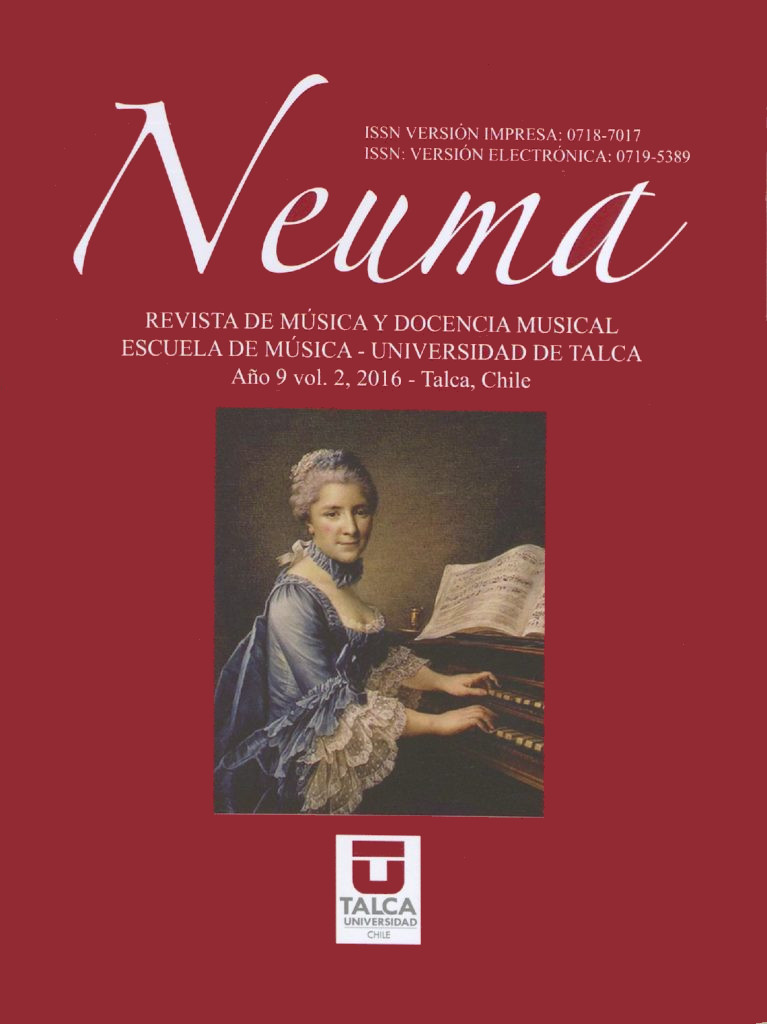Abstract
One of the most important works for solo flute not only in Baroque music but also in any time of History, has hardly ever been studied apart from schematic introductions to sheet music or CDs editions. From the flutist side and under a historical, musicological and technical perspective, I provide as a new contribution my personal reflections as well as a review of the most relevant bibliography. The aim of this paper is to explain important issues such as theories about the origin and date for composition of Sonata BWV 1030, the relationship of Bach and the flute, technical difficulties of execution, and, as the more controversial one, the existence of a properly idiomatic language for the flute. Furthermore, other issues on the form and style must be included on a general approach like that and are discussed as well. Finally, an Appendix is supplied with the most representative sheet music and recordings including the sonata BWV 1030.
References
Addington, Christopher (1985). “The Bach Flute”, The Musical Quarterly, 71/3, pp. 264-280.
Basso, Alberto (1986). Historia de la Música, Vol 6. La época de Bach y Haendel. Madrid: Turner.
Bowers, Jane (1971). The French flute school from 1700 to 1760. Tesis de doctorado, Universidad de California, Berkeley.
Braun, Gerhard (1984). “Preface”. J. S. Bach: Sonate h-Moll (BWV 1030), Sonate A-Dur (BWV 1032) für Flöte und Cembalo, Gerhard Braun (editor). Viena: Universal edition, s/n.
Buelow, George J. (1974). “In Defence of J. A. Scheibe against J. S. Bach”, Proceedings of the Royal Musical Association, 101/1, pp. 85-100.
Buelow, George J. (2001). “Rhetoric and Music”, Grove Music Online , [consultado el 16 de Mayo de 2011].
Burkholder, J. Peter, Donald J. Grout y Claude V. Palisca (2008). Historia de la música occidental. Madrid: Alianza Música.
Dürr, Alfred (1968). “Zu Hans Eppsteins ‘Studien über J.S. Bachs Sonaten für ein Melodieninstrument und obligates Cembalo,’”, Die Musikforschung, 21/3, pp. 332-40.
Eppstein, Hans (1966). Studien über J. S. Bachs Sonaten für ein Melodieinstrument und obligates cembalo. Estocolmo: Acta Universitatis Upsaliensis.
Harnoncourt, Nikolaus (1984). Le discours musical: pour une nouvelle conception de la musique. Paris: Gallimard.
Kirnbauer, Martin, Peter Thalheimer y Catherine Taylor (1995). “Jacob Denner and the Development of the Flute in Germany”, Early Music, 23/1, pp. 83-100.
Kuijken, Barthold (1995). “Postface”, Johann Sebastian Bach, Sonate für Flöte und Cembalo h-Moll BWV 1030. Barthold Kuijken (editor). Wiesbaden: Breitkopf & Härtel, pp. 32-6.
Marshall, Robert L. (1979). “J. S. Bach’s Compositions for Solo Flute: A Reconsideration of Their Authenticity and Chronology”, Journal of the American Musicological Society, 32/3, pp. 463-498.
Otterbach, Friedemann (1998). Johann Sebastian Bach. Vida y obra. Madrid: Alianza Música.
Powell, Ardal y David Lasocki (1995). “Bach and the Flute: The Players, the Instruments, the Music”, Early Music, 23/1, pp. 9-29.
Quantz, Johann J. (2001). On Playing the Flute. Boston: Northeastern University Press).
Radermacher, Ludwig (1971). Institutionis Oratoriae libri XII, M. Fabii Quintiliani. Leipzig: Teubner.
Schulze, Hans J. (2001). Johann Sebastian Bach: documentos sobre su vida y su obra. Madrid: Alianza Música.

This work is licensed under a Creative Commons Attribution-NonCommercial 4.0 International License.
Copyright (c) 2016 Neuma (Talca)

